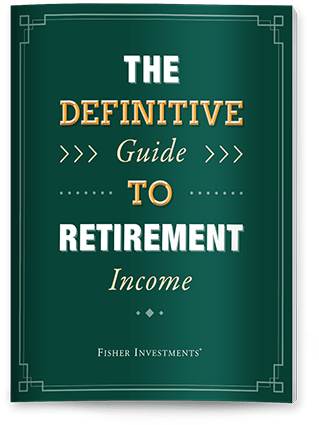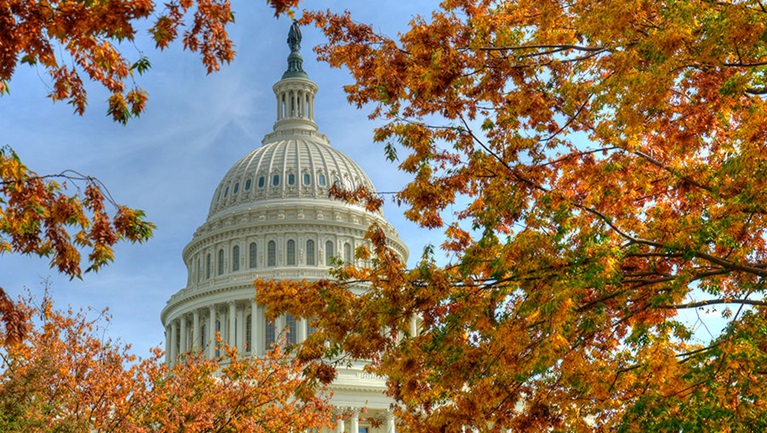Personal Wealth Management / In The News
The Jackson Hole Hokey Pokey
The Fed just undid its biggest framework change from five years ago.
Among the many perks of being a Fed governor is that, whatever political storm might be swirling about you in late August, you get to take a short break in the Grand Tetons. Yes, friends, Fed folk and their global central banking colleagues descended once again on Jackson Hole—perhaps the last such retreat for Fed head Jerome Powell, whose term as chair ends next May.[i] As pundits pored over Powell’s keynote address, a common interpretation emerged: Rate cuts are coming, which purportedly buoyed markets last Friday. All that is vastly overrated—and we said as much two weeks ago. More interesting to us was part two of Powell’s speech. The updates to the Fed’s policy framework are a reminder that central bankers’ communication efforts—while well-intentioned—are more noise than help, worth keeping in mind for investors’ assessing the economic landscape.
We know the Fed is in headlines a lot for political reasons these days. As ever, we are setting all that aside, focusing where stocks do: on policy and its potential effects. And while the Fed didn’t make big policy moves last week, it once again used the conference to amend its guidelines—a process that goes back to 2012, when the Fed formally adopted a framework statement, which details its monetary policy approach. This ostensibly provides the American public with the Fed’s interpretation of its dual mandate, enshrined in 1978’s Humphrey-Hawkins Act.
The framework undergoes review roughly every five years, and the Federal Open Market Committee adjusts based on new information and developments. The first review occurred in 2019 – 2020, and Powell shared the changes at the 2020 Jackson Hole Zoomfest. The highlight then was an update to the Fed’s target of 2% y/y in the headline Personal Consumption Expenditures (PCE) Price Index. Instead of targeting a 2.0% y/y inflation rate on an ongoing basis, the Fed said it would adopt “Flexible Average Inflation Targeting,” which aimed for “inflation that averages 2 percent over time.”
But the central bank never outright defined “average” or “over time,” a lack of transparency in communication few questioned at the time—and a decision that didn’t age particularly well. Powell described this as “a ‘makeup’ strategy to ensure that inflation expectations would remain well anchored even with [the Fed’s policy rate being so near zero]. In particular, we said that, following periods when inflation had been running persistently below 2 percent, appropriate monetary policy would likely aim to achieve inflation moderately above 2 percent for some time.”[ii] In other words, they wouldn’t be averse to letting things run a little hot after a long cold spell.
With hindsight, some thought this nebulous target meant the Fed would tolerate inflation higher than its 2% target to compensate for a prolonged period of undershooting, which had happened in the 2010s. Yet that language tinkering ended up being a moot point: Jackson Hole 2020 preceded the hottest inflation in over 40 years. (Exhibit 1) As Powell summed it up last Friday: “As it turned out, the idea of an intentional, moderate inflation overshoot had proved irrelevant. There was nothing intentional or moderate about the inflation that arrived a few months after we announced our 2020 changes to the consensus statement, as I acknowledged publicly in 2021.”[iii] This inflation spike eventually prompted the Fed to jack rates back over 5%, wiping away concerns that rates would be stuck near zero in the long run. Five years later, the Fed basically pressed “control + z” and undid its 2020 framework, returning to where things were before.[iv]
Exhibit 1: The Fed Has Long Been Wide of the Mark

Source: FactSet and St. Louis Federal Reserve, as of 8/27/2025. US PCE Price Index, year-over-year change, and Federal Funds Effective Rate, December 2008 – June 2025.
To be clear, Powell didn’t blame the Fed’s amended targeting strategy for 2022’s hot inflation. Nor are we. He didn’t say so, but that was an after-effect of a global explosion in money supply during COVID lockdowns, not Fed guidance mumbo-jumbo. Rather, it seems like the change now is a tacit admission that pledging to allow a little inflation to make up for lost time was largely a solution in search of a problem. With rates now more “restrictive” and the Fed believing the mystical “neutral” rate of interest is higher than it thought earlier, policymakers see a communication-and-targeting strategy oriented around near-zero rates and perpetually below-target inflation as outdated and potentially confusing. Powell used similar reasoning for tweaks to the employment-related parts of the framework. They will now no longer refer to “shortfalls” from maximum employment, because “our use of the term ‘shortfalls’ was not always interpreted as intended, raising communications challenges.”[v]
To us, this highlights a long-running problem with the Fed’s “transparency” push, which started about 20 years ago under Ben Bernanke. Transparency, in principle, is a fine thing. But in the Fed’s case, under multiple leaders appointed by presidents of both parties, we find it ended up amounting to a lot of words that generated more confusion than clarity. Time and again, the Fed would deliver specific policy guidance, then do something different or change its approach as it missed its targets. In the old days, if the Fed missed, the world generally wouldn’t know because Alan Greenspan and his predecessors would couch everything with incoherent Fedspeak. Obfuscation, bizarrely, helped their credibility. Attempts at clarity mostly served to erode it, leaving multiple Fed heads chasing their tails and changing guidance after target misses. To us, it isn’t clear that any of this ultimately led to better monetary policy.
Going back to the old approach doesn’t mean they will be any more successful at achieving their objectives, either. The Fed rarely hit its 2% y/y target between 2012 – 2020. When the Fed introduced flexible targeting, we joked at the time that it was effectively ditching its 2% target altogether—how could you hit a mark that doesn’t exist? Heck, when the PCE inflation rate hit its high of 7.2% in June 2022, the Fed could technically have said it achieved its newly flexible target since the average rate was exactly 2.0% since January 2015.[vi] We doubt that would have gone down well. We also doubt an amended framework changed their approach. It always seemed more like a communication issue than a policy issue.
To us, this is all further evidence the Fed (or any central bank) isn’t an all-powerful economic steward. Central banks can’t fine tune inflation rates to the decimal nor materially boost or slow economic growth. Fed rate changes are one variable that can influence credit supply—which can affect growth and businesses’ hiring decisions—but the relationship isn’t cut and dry, and overrating its power or precision is an error.
Finally, these concepts are largely theoretical anyway—and, like the whole dual mandate, based on fallacies. The Fed is supposed to use monetary policy to achieve “maximum employment” and price stability, and it defines the former as the lowest level of unemployment the economy can sustain without driving excessive inflation. This erroneous thinking is tied to the Phillips Curve, which posits that unemployment and inflation are connected. Not so—as Nobel-winning economist Milton Friedman showed decades ago, inflation is a monetary phenomenon, not a labor market one.
For investors, keeping perspective on the limits of central bankers’ influence is worthwhile. They don’t pull a lever here, adjust a policy statement there and turn out ideal policy that keeps employment high and inflation on target. Rather, they are human and fallible, adjusting one variable to economic growth and then using a lot of words when it doesn’t quite work as intended.
[i] Likely last as Fed Chair, but that won’t prevent Powell from returning to Jackson Hole in the future, of course—who wouldn’t want to go to the Million Dollar Cowboy Bar?
[ii] “Monetary Policy and the Fed’s Framework Review,” Jerome H. Powell, US Federal Reserve, 8/22/2025.
[iii] Ibid.
[iv] Not unlike the “Dream Season” from the TV series Dallas.
[v] “Monetary Policy and the Fed’s Framework Review,” Jerome H. Powell, US Federal Reserve, 8/22/2025.
[vi] Source: FactSet, as of 8/26/2025.
If you would like to contact the editors responsible for this article, please message MarketMinder directly.
*The content contained in this article represents only the opinions and viewpoints of the Fisher Investments editorial staff.
Get a weekly roundup of our market insights
Sign up for our weekly e-mail newsletter.

See Our Investment Guides
The world of investing can seem like a giant maze. Fisher Investments has developed several informational and educational guides tackling a variety of investing topics.





